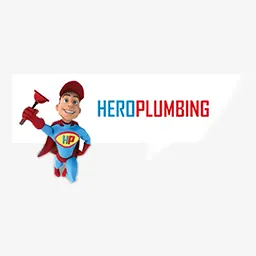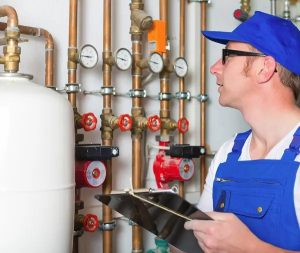Table Of Contents
Detecting Plumbing Leaks
Water leaks can significantly affect your water bills. Although minimal initially, water leaks can become more detrimental over time. These leaks not only increase the amount of money you pay to settle your water bill, but they may also cause damages to your property in the end. For instance, wooden furniture is prone to rotting and eventual damage when exposed to water over long periods.
It is estimated that a leaking toilet can waste up to 9000 litres of water in a year. This can trigger an unreasonable increase in water bills. It is not always easy to detect water leaks in your home until you experience a sudden and unjustified water meter reading. The state of your home could impact the amount and frequency of water leaks you experience.
Old houses or apartments are more likely to experience more frequent water leaks caused by ageing and worn-out plumbing and fittings. Similarly, grown roots of large trees in your compound may also break the underground pipes or loosen their joints, thus causing concealed water leaks. What then should one do? Keep reading for more on how to detect water leaks!
Performing A Water Leak Test
Even prior to worrying about where the leaks are coming from, it is necessary to identify whether there are water leaks present in your home. So, how can you test whether your home has water leaks? One of the best ways is to perform a water leak test. A water leak test is carried out from the water meter. To carry out a successful water leak test, you need to do the following:
- Begin by locating your water meter. The designated area of the water meter depends on where you are living. If you live in an apartment, you are highly likely to find the water meter in the service cabinet, kitchen cupboard, or laundry. However, if you live in your own home, the water meter will most likely be located in an underground box at the entrance of your home.
- Observe and note down your water meter reading at that time. The reading will depend on the type of the water meter. Most water meters are mechanical and indicate the readings in either black or red numbers.
- Shut down all your water outlets and wait for about ten to fifteen minutes without using the water.
- Go back to the location of your water meter, observe and note down the second reading. If the two readings are similar, that would indicate that there are no leaks in your home. However, if the two readings are different, especially when the second reading is higher than the first, it would mean that you have water leaks in one or more areas in your home.
Identifying Where The Leak Is Coming From
If you have no water leaks, then you are well set. However, if you realise that you have water leaks, the next step is to find out where the leak is coming from. To detect water leaks in your home, it would help to divide your house into different sections and carry out the inspection from one section to the other. The most common areas that you need to pay more attention to are discussed below.
Toilet
Toilets are usually among the most common sources of water leaks in many households in Australia. The primary reason is that toilets are connected to waste pipes and are often installed on higher floors. How can one detect water leaks in the toilet?
To begin with, check the base of the toilet if it is loose. If the toilet is loose, meaning that there is some space between the bottom of the toilet and the floor, there are high chances of leaks caused by the pressure from flushing the toilet. You can also try sitting on your toilet to feel any movement that may suggest that the base of the toilet is loose.
The presence of stains or wetness on the ceiling directly above the toilet may also suggest the presence of leaks caused by poor drainage in the toilet. Water patches closer to the supply water pipes in the toilet may indicate the presence of water leaks as puddles of water from supply pipe leaks do not form far from the source of such leaks.
Bathroom
Leaks may also occur in your bathroom. The good thing is you can detect such leaks. The splashing of water over the bathroom tiles may cause them to loosen. Although this is a minor cause of the loosening of bathroom tiles, loose tiles could signify the presence of water leaks. This is because as the water leaks inside the wall, the tiles get into contact with the caulk or the grout; these weaken and loosen over time, making the tiles loose.
Similarly, the presence of peeling wallpaper or paint inside or outside the walls of the rooms adjoining your bathroom could be a sign of leaks. Water seeping primarily causes such leaks through the caulk between the bathroom tiles. This occurs primarily when your bathtub is attached to the wall. As the water seeps through the caulk, it soon reaches the connected wall, thus making the wallpaper and the paint peel off.
Moreover, you can detect water leaks by inspecting the caulk between the floor and the tub. The caulk undergoes erosion after some time, thus creating small spaces. Such spaces are likely to cause water leaks in your bathroom. Another sign of water leaks in the bathroom is the presence of stains or wetness on the ceiling immediately above the bathroom.
Leaks from bathroom water pipes primarily cause these leaks. When bathroom pipes are loose and cause water leaks, the water moves through the joists into the ceiling, thus forming dark stains on it. Similarly, the presence of constant mould or mildew growth may be a sign of water leaks in your bathroom caused by the bathroom pipes. Mould and mildew grow primarily in dark areas with moisture.
Kitchen
In the kitchen, water leaks primarily occur around the sinks, the taps, and at the supply pipes located at the base of the sinks. You can detect a leak at the sink by inspecting the countertop in the particleboard for any changes. A leak may occur, especially if your countertop is made of a plastic laminate. Such a countertop may be affected by water, making it become dark, swollen, and spongy, thus causing water leaks.
Moreover, the pressure caused by splashing water may also loosen the point at which the faucet joins the countertop. If this joint is loosened, it will create some spaces allowing water to seep through, thus causing leaks. Therefore, to avoid this kind of leak, it is best to examine the base of the faucet regularly to ensure that it is not loose.
Although rare, water leaks may also occur at the base of the cabinets. The supply pipes that run inside the cabinet cause these kinds of leaks. However, these types of leaks are not easily detectable until later, after the cabinet boards are rotten. As the water leaks into the wooden boards, the boards absorb the water and start to rot. After some time, small spaces are created within the board, and the dripping starts.
Supply pipes or drainpipes might also be significant causes of water leaks in your kitchen. You will need a dry piece of lightly coloured cloth to detect water leaks from supply pipes or drain pipes. Wrap this piece of cloth around the said pipes as the water drains from the sink. If there are leaks in the pipes, you will notice some patches of wetness on the piece of cloth. You will find these indicators around the regions that are leaking.
Underground
Underground plumbing leaks are also known as concealed leaks. Supply pipes that run underground cause these leaks making them challenging to detect. Once you notice an underground water leak, it is best that you contact a plumber to repair it as you may cause further damage trying to fix it yourself. How can you detect an underground water leak?
There are several signs of concealed water leaks. These include:
- Muddy or soft areas in the compound garden
- Patches of wetness around the curb or driveway
- Spots of greener grass over your compound
- The presence of leaking irrigation pipes
- The presence of water patches on the meter box
Time To Call A Plumber?
After you identify where the leak is coming from, finding a solution as soon as possible is essential to avoid incurring further expenses or damage to your property. There are types of water leaks that you can repair and others that would need the assistance and expertise of a plumber.
The best approach is to get in touch with a plumber, as you may not be able to tell which leak you can handle yourself and which can only be handled by an expert plumber until it’s too late. Similarly, not all water leaks in your home or apartment are your responsibility.
Sometimes the Water Corporation becomes responsible for certain water leaks. To identify which leaks you are responsible for and which ones are to be handled by the corporation, you need to check your water meter. If the leak reads on the ‘roadside’ of your water meter, that means that the Water Corporation will handle the leak.
However, if the leak is registered on the ‘house side’ of the water meter, it entirely becomes your responsibility, and you should consider calling a plumber as soon as possible. Water leaks can quickly get out of hand, so don’t wait till the situation is dire before getting the leak sorted out.











